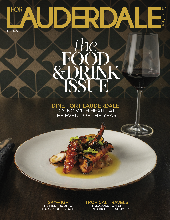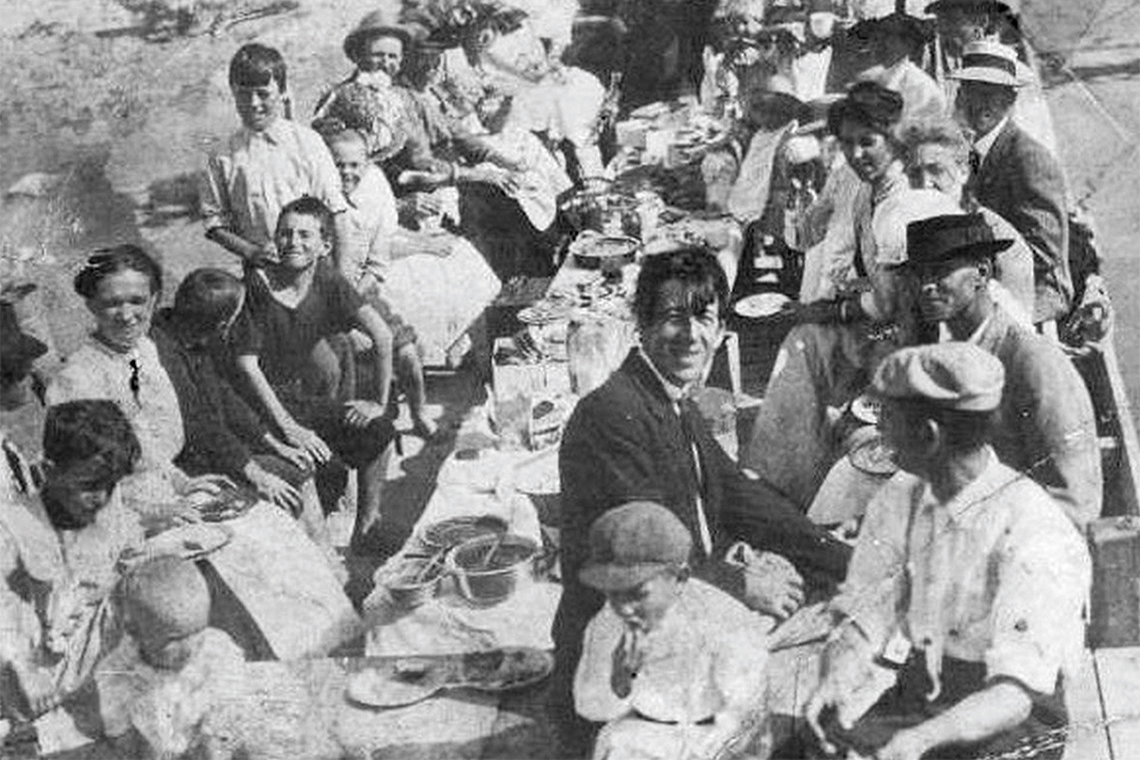More than a hundred years ago, the new county of Broward was forged around our city, and among the towns incorporated – like Hollywood and Pompano – was a place called Zona.
Zona?
A place settled by a few dozen pioneering families from around the country, many of whom, curiously, helped build the Panama Canal.
A place then accessible only by boat and barge – yet the settlers were able to battle the fierce mosquitoes, dig up the fertile muck of the Everglades, build homesteads and raise 30 types of fruit and vegetables.
A place we now know as Davie.
Tony Salvino was quoted by writer Victoria Wagner in 1982, and his story is typical. His father came to Zona in 1914 and “bought 10 acres for $1,500.” Two years later, he brought the rest of the family. “We came by train to Jacksonville via the Illinois Central Railroad…. The following day, we took the Florida Coast Railroad to Fort Lauderdale. From there a boat carrying both passengers and freight ran to Zona.”
Another of the early families was that of Ed Viele, whose family home is preserved today behind the Old Davie School Museum at 6650 Griffin Rd. He told Wagner about the adventure of getting there: “We came by train to Fort Lauderdale and then by boat the rest of the way. Our furniture came by barge, and on the way the barge overturned. I remember seeing the furniture float here and there down New River. Most of it was ruined.”
Viele described the early lifestyle. “No matter what your occupation or profession had been previously, here you raised tomatoes, cucumber, broccoli, and took them by boat to Fort Lauderdale to be shipped north.”
But what about these curious settlers from the Panama Canal Zone who named the place Zona? Were they asked to be there because of their “draining” experience? Were they here to do another dig?
Like so much left unsaid in other historical accounts, the answer is found in Wagner’s tract, entitled “The History of Davie and its Dilemma” and printed by Nova University (now NSU) in a simple 80-page binder.
“When the Canal was completed, the workers were approached by real estate salesmen from the Everglades Sugar and Land Company. Those who were gamblers at heart, and wanted to be farmers, bought the land sight unseen.” Those men organized the Zona Glades Company and named their new settlement Zona. “They were men of energy and initiative so, by 1913, about 30 varieties of crops were grown, from strawberries to cabbages,” Wagner reports.
Soon there was a need for schooling. Robert Parsell Davie, a developer who had assisted Gov. Napoleon Bonaparte Broward in draining swamplands, helped build a small school. For these and other services, citizens renamed the town after him. While some accounts date this at 1916, a Fort Lauderdale Sentinel article reports the local post office changed the name to Davie in 1914.
In 1918 a much bigger school – it offered four classrooms – opened its doors to 90 students. On the second floor, a meeting room served both the school and the community. “The Old Davie School” on Griffin Road – designed by architect August Geiger and built by the 3-year-old Broward County – is a now museum. It is our county’s oldest existing school building.
After R. P. Davie, the town’s identity was forged by a man whose name few know, but whose legacy is in Davie’s very fabric. In the 1930s Missouri cattleman James Bright brought in horses – not working mules, but thoroughbreds. He built Camelot Farms on Orange Drive where he bred and trained the horses. (Earlier, he had helped found Hialeah Race Track.)
It seemed that overnight a love affair began, and a new lifestyle sprouted. As the years went by, there was a proliferation of cowboy hats and boots, western gear, and eventually a rodeo. Even in the 1960s, you could see horses hitched up at the Western-style McDonald’s on Davie Road. Davie was “horse country.”
And still is, remarkably. The western culture has defied the odds, as much of the last half-century saw land for agriculture and cattle dwindle as the suburban population exploded. In 1970 Davie’s population stood at 5,859. That has leaped to over 100,000, a 95,000-person increase. And yet take a drive along Orange Drive, glance down sidestreets with their stables, or view the pastures that stretch to Flamingo Road. South Florida visitors used to cruising AIA are often astonished to see this “so close to Fort Lauderdale.”












